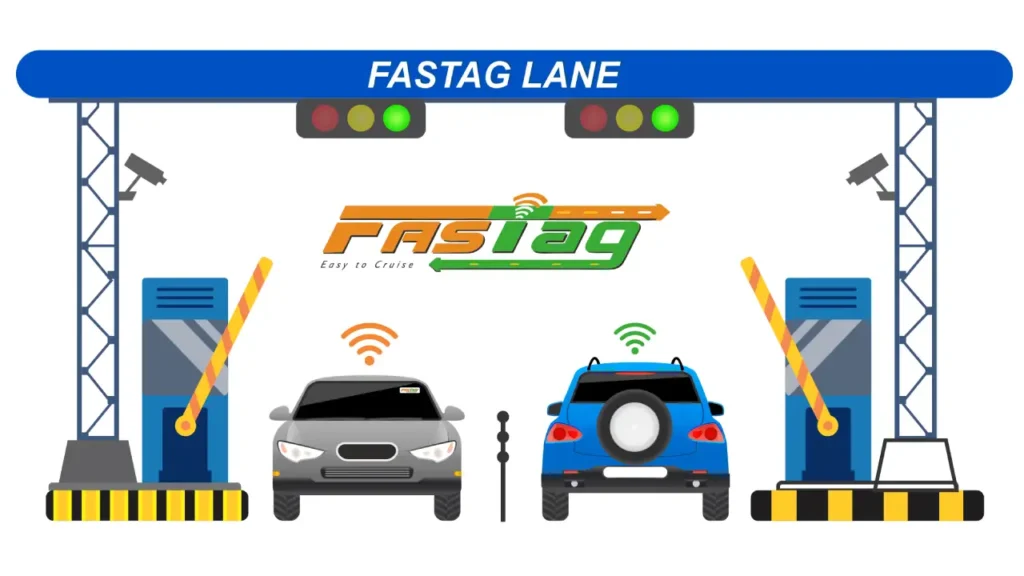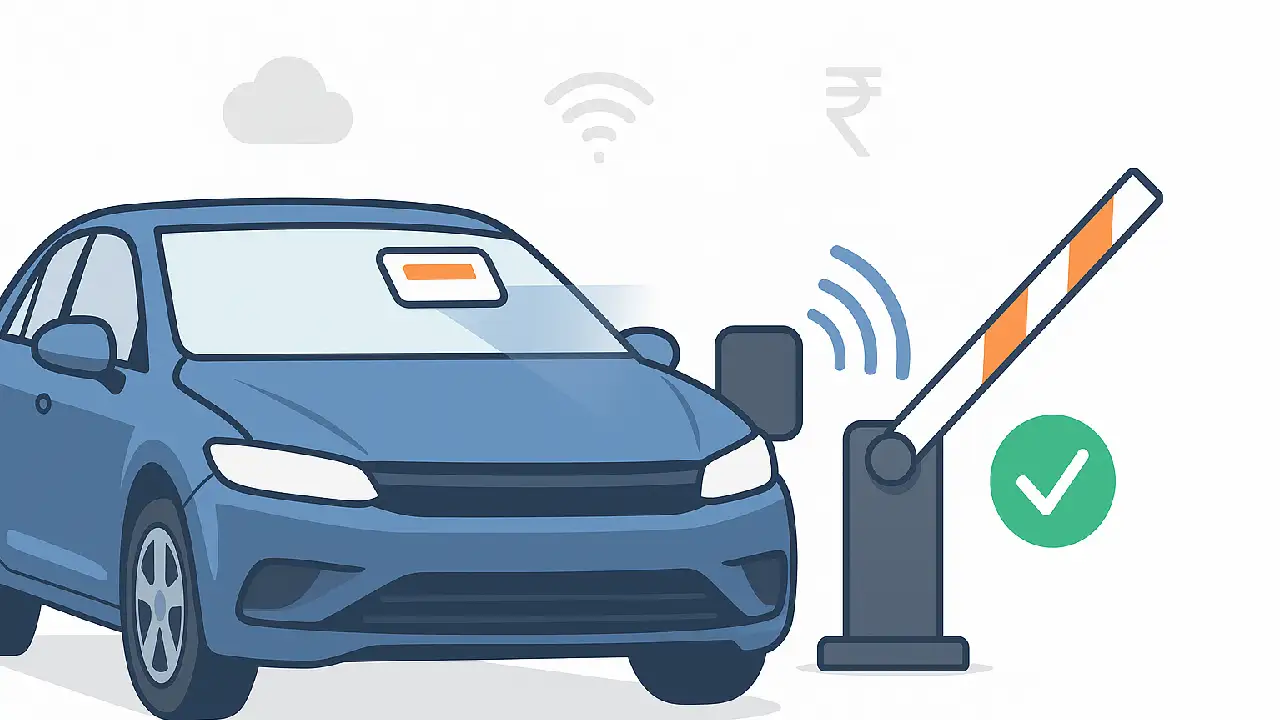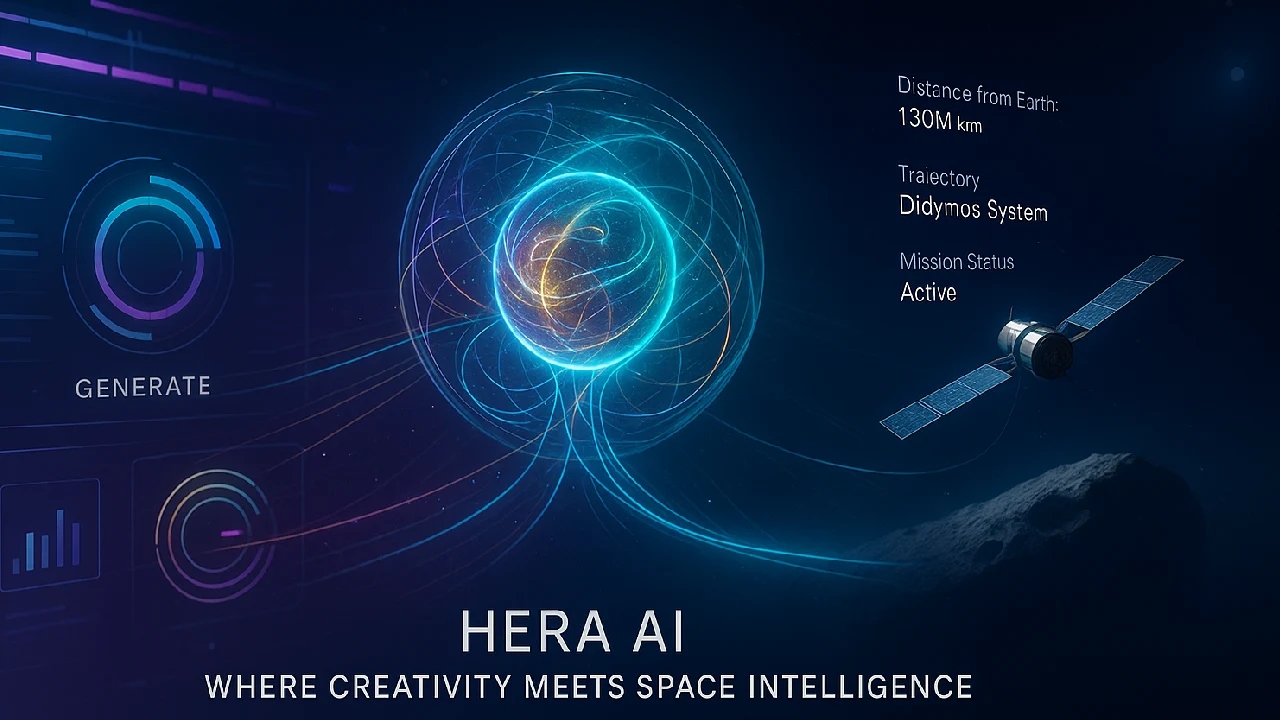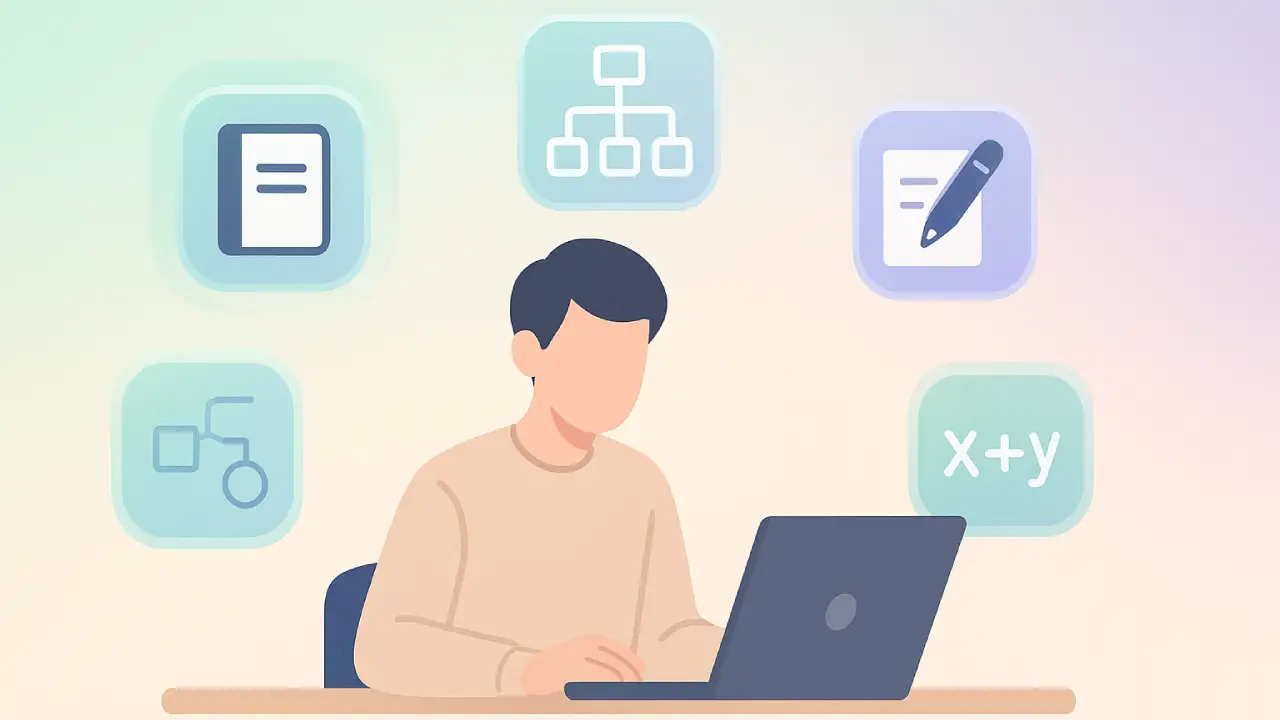Have you ever confused how your car can go right past toll booths without you having to stop and pay? A little sticker on your windshield called a FASTag is what makes that magic happens.

This computerized toll collection system is now required in India, and it has changed the way people travel on highways. But what kind of technology is it? Let’s take it apart.
What is FASTag?
The National Highway Authority of India (NHAI) runs FASTag, an electronic toll collection (ETC) system. It uses Radio Frequency Identification (RFID) technology to automatically charge a toll when a car goes through a toll plaza.
Each FASTag is linked to a prepaid account or wallet and is stuck to the windshield of the car. The sum is taken out of the associated account as the car goes through the toll lane. There is no need to stop or pay cash.
1. RFID Technology (Radio Frequency Identification)
- The FASTag is a passive RFID tag based on UHF (Ultra High Frequency).
- It does not have its own power supply but gets activated when it comes in proximity to an RFID reader at the toll booth.
- The RFID chip stores a unique identification number, which is mapped to your vehicle registration and account information.
2. RFID Toll Booth Scanner
- At every toll lane, there’s an RFID reader mounted above or beside the lane.
- When a vehicle approaches the toll booth, the reader emits radio waves that power the FASTag and read the unique tag ID.
- This scanned ID is then sent to the backend server in real time.
3. Backend Server & Vehicle Authentication
- The toll plaza’s centralized control system receives the tag ID.
- It checks the ID against the National Electronic Toll Collection (NETC) database, maintained by NPCI (National Payments Corporation of India).
- If the ID is valid and linked with a prepaid account having sufficient balance, it authorizes the transaction.
4. Automatic Toll Deduction
- Once authenticated, the system deducts the applicable toll fee from the vehicle’s FASTag wallet.
- A confirmation message is sent to the user’s mobile number, and the boom barrier is lifted automatically.
FASTag Workflow: A Step-by-Step Example
| Step | Process | Technology Used |
|---|---|---|
| 1 | Car approaches FASTag lane | Vehicle movement detection |
| 2 | RFID reader scans FASTag | UHF RFID technology |
| 3 | Tag ID is verified with backend | NETC cloud server |
| 4 | Wallet is debited | Bank API, UPI infrastructure |
| 5 | Barrier opens and SMS sent | IoT device + SMS gateway |
Behind the Scenes: FASTag Ecosystem Players
Several key players ensure FASTag operates smoothly:
- NHAI & NPCI: Policy, infrastructure, NETC program
- Toll Operators: Run toll plazas and RFID hardware
- Banks & Wallets: Issue FASTags and handle payments (Paytm, ICICI, HDFC, etc.)
- Vehicle Owners: Affix FASTag and maintain balance
What Happens If FASTag Fails to Work?
Sometimes the FASTag may not scan due to dust, damage, or poor reader alignment. In such cases:
- The toll staff may manually enter the vehicle number.
- A penalty (double toll fee) may apply if the FASTag is inactive.
- The user receives an SMS about the failed or successful attempt.
Benefits of FASTag Technology
- Reduced Congestion: No stopping at booths speeds up highways.
- Automatic Payments: Linked to your UPI or bank account.
- Timesaving: Reduces wait time, especially during peak hours.
- Real-Time Alerts: SMS notifications for every transaction.
- Eco-Friendly: Less idling, less fuel waste, and reduced emissions.
FASTag in India: Quick Stats (2025)
- Over 7 crore+ FASTags issued in India.
- 750+ toll plazas across national and state highways support FASTag.
- Digital payments account for 97% of toll revenue collection.
- Used in parking lots, state transport, and even border checkpoints.
Future of FASTag and Toll Technology
The government is already testing ANPR-based (Automatic Number Plate Recognition) tolling systems. In the coming years:
- Toll will be charged based on distance travelled, not just fixed booths.
- GPS-based tolling is in pilot phase.
- FASTag may merge with vehicle telematics and insurance tracking.
Final Thoughts
FASTag has revolutionized the way people drive on Indian roadways. RFID, cloud computing, and digital payments work together to make it a smart, easy-to-use solution. Even though it looks basic, the technology within is both efficient and scalable.
When you hear the beep at a toll booth, remember that a lot of technology worked in a split second to keep you going.







